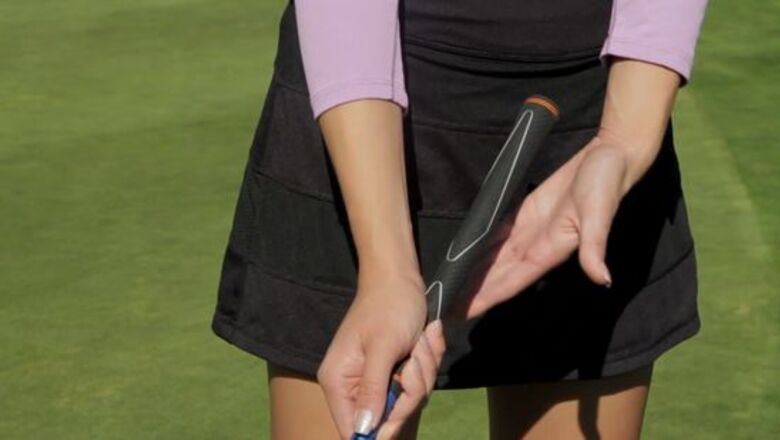
views
- Place your dominant hand lower on the club with your nondominant hand on the opposite side.
- You can tuck your hands against one another or interlock your fingers depending on what’s more comfortable for you.
- For a simpler grip, try holding the club straight up in the air and gripping it like a baseball bat.
Mastering Grip Basics
Place your dominant hand on the club. If you’re right-handed, this is your right hand, and vice-versa if you’re left-handed. Grab the shaft where it connects to the grip and lift the club up at a 45-degree angle. Golf Teacher Michael Metz emphasizes that the specifics of the grip may be slightly different depending on your body, but "all things being equal, the proper way to hold the club would be with the face looking at the target." This isn’t where you will ultimately hold the club with your dominant hand, but it allows you to properly grip the club with your off hand first.
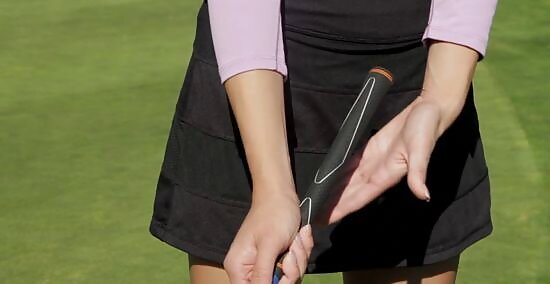
Place the club in your non-dominant hand. This is your left hand if you’re right-handed, and vice-versa if you’re left-handed. Keeping your off hand relaxed and with the palm facing you, lay the grip of the club across the inside of your fingers in the area where your first knuckles and palm meet. The butt of the club should be extending just past the base joint of your pinkie.
Secure your off hand. Curl the bottom three fingers of your non-dominant hand around the grip. Set your thumb flat across the club. You want to roll your thumb over towards the opposite side of the grip, while curling your forefinger around the grip. According to Golf Teacher Michael Metz, "you want to see the index finger knuckle and middle finger knuckle of your left hand when you hold the club." If you have secured your grip properly, you should feel every part on the underside of your bottom three fingers making contact with the club’s grip. You’ll know you have a proper grip when you can feel the base, fatty part of your thumb on the handle, and not overlayed on your forefinger.
Place your dominant hand. Imagine a clock with the club head pointing at twelve. Curl your fingers over the grip like you did with your other hand. According to Golf Teacher Michael Metz, "you interlock your pinky of the right hand and index finger of your left." In other words, wrap your pinky finger into the space between the forefinger and middle finger of your non-dominant hand. Point your right thumb toward eleven on your imagined clock, and lay it flat on the grip of the club. You can also interlock your pinky finger with your forefinger and middle finger if that feels more comfortable or natural to you.
Using Different Grips
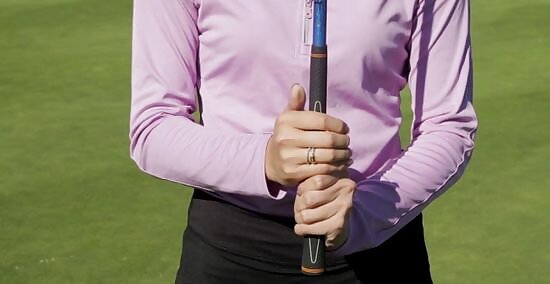
Try the 10-finger (or baseball) grip. To achieve this grip, simply scoot your dominant hand down the grip of the club so that there is no space between the fingers of your two hands. Instead of interlocking or overlaying your pinky finger, you grip the club like a baseball bat. This grip is often used by novices, players with small hands, and players with arthritis. The baseball grip can also give you more leverage which can allow you to hit the ball farther. Note that with this grip you may not get as accurate a shot. Keep in mind to lead with your hips when swinging and follow with your hands.
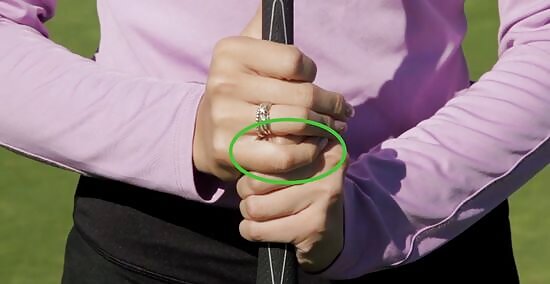
Try the Vardon grip. To achieve the Vardon grip, take the pinkie finger of your dominant hand and move it back to lay on top of the fingers of your left hand. It should sit on top of the space between your index and middle fingers. The Vardon grip is the most common and is the traditional textbook grip. It is especially recommended for people with large hands, and can be more comfortable for those players than the interlocking grip. Players with small hands may find it difficult.
Try the interlocking grip. According to Golf Teacher Michael Metz, the goal of this grip is "to see that when you're gripping that club that [the line that's made when you put your right thumb and index finger together] points at your right shoulder. [That] makes for what's considered a neutral to strong grip." To achieve the interlocking grip, separate the index and middle fingers of your non-dominant hand. Move the pinkie of your dominant hand into this space so that your two hands interlock. This grip is often recommended for younger or weaker players, but is also used by many golfing greats like Tiger Woods. It works best for players with medium or average hands. The interlocking grip reduces tension and excess wrist movement, but some players find it uncomfortable.
Playing with Grip Strength for Different Shots

Experiment with strong and weak grips. A weak grip means the hands are rotated on the club handle more towards your target. If you can only see the knuckle of your forefinger on your dominant hand, you have a weak grip. A strong grip means the exact opposite, with a rotation to the side of your club further away from your target. A weak grip can combat a hook as well as add height and backspin to the ball. It can also cause the ball to slice, and make proper swinging form difficult to achieve. A strong grip can be very comfortable and result in good low hits, but it can also make the golfer prone to hooking.
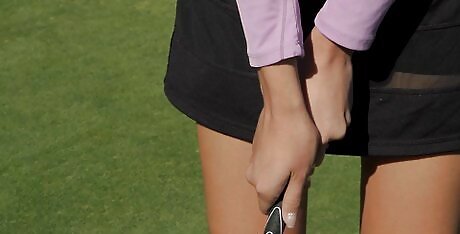
Weaken your grip for short game. A looser grip will allow you to gain more precision and loose distance, which you don’t need here. Grip the club as you normally would, and pay attention to where the creases created by your forefingers and thumbs are pointing. These creases should be pointing to the left of your chin, closer to your target. If you are right-handed, the creases should be pointing to the left of your chin. If you are left-handed, the creases should be pointing to the right of your chin. The creases, may also make “V” shapes. You want the point of the “V” pointing closer to your target on your short game.
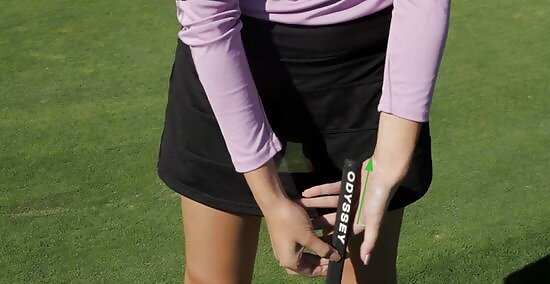
Angle your wrists down for putting. When you’re on the green you want to minimize the movement in your wrists. Move the handle of your putter back in your dominant hand so it rests on the lifeline of your palm. Grip it the same way with your other hand. Then, angle your wrists downwards. Hold your putter with a baseball grip. You don’t need or want wrist movement here. Holding your putter with a 10 finger grip and angling your wrists down helps to keep them locked. Your putter should be an extension of your arms and swing like a pendulum.


















Comments
0 comment